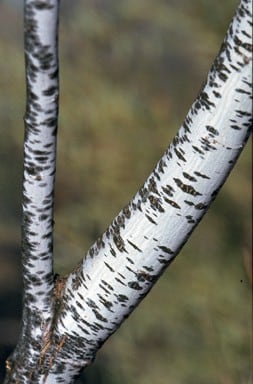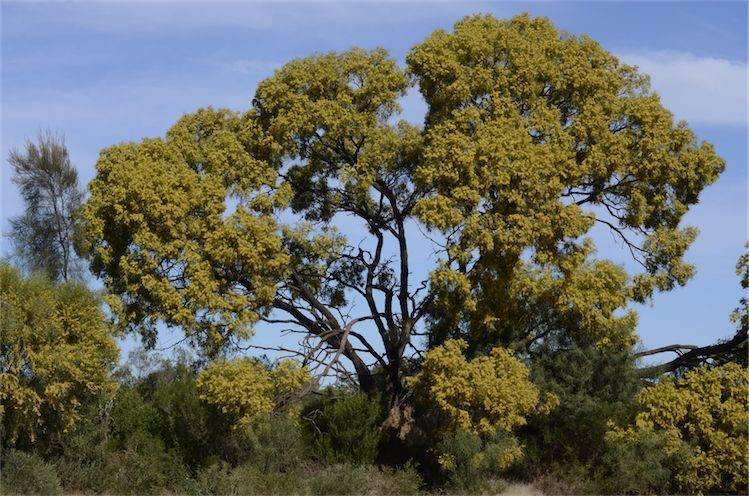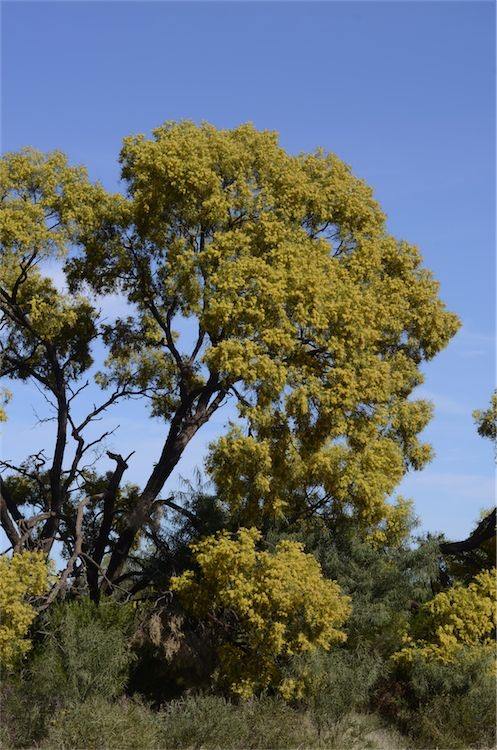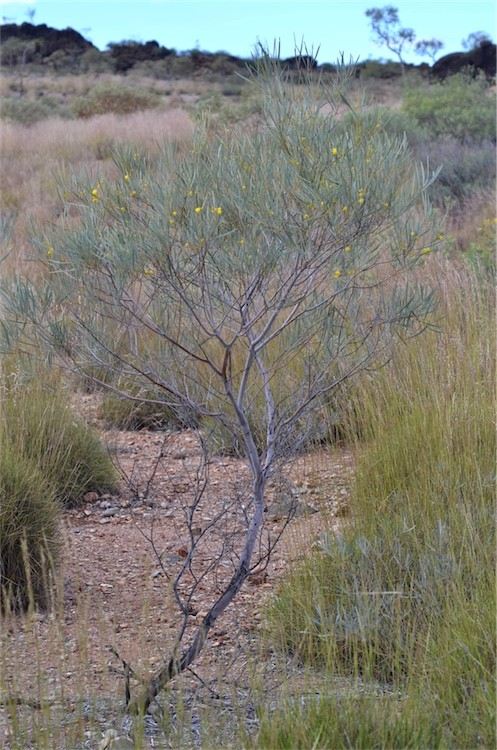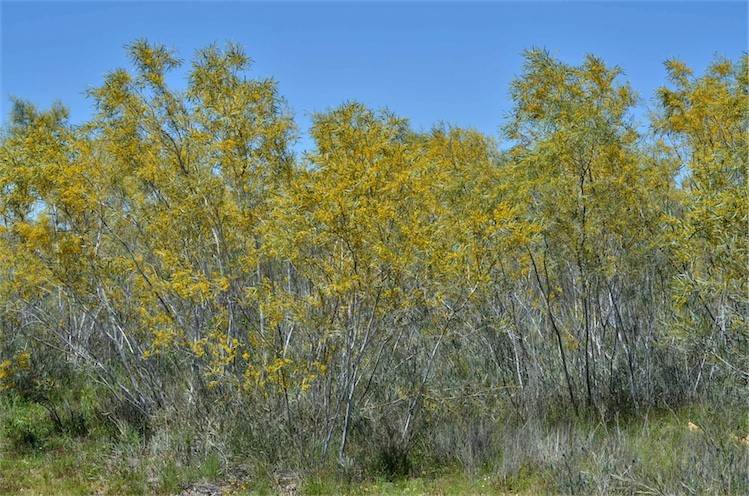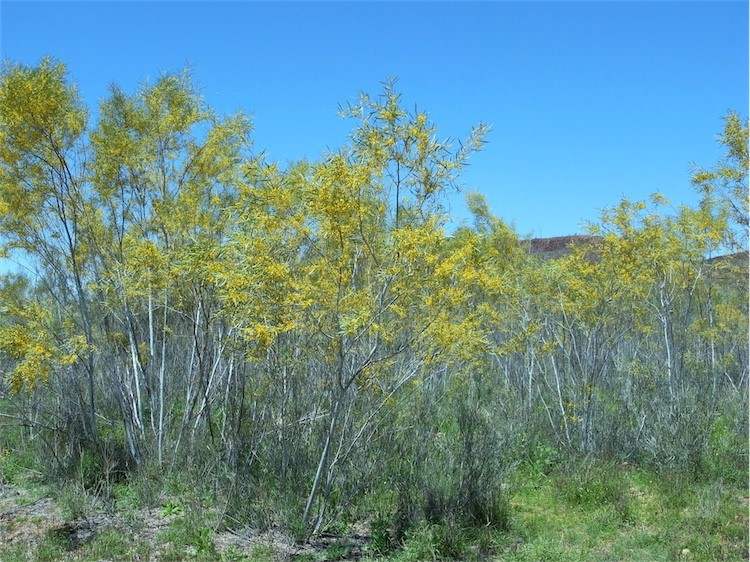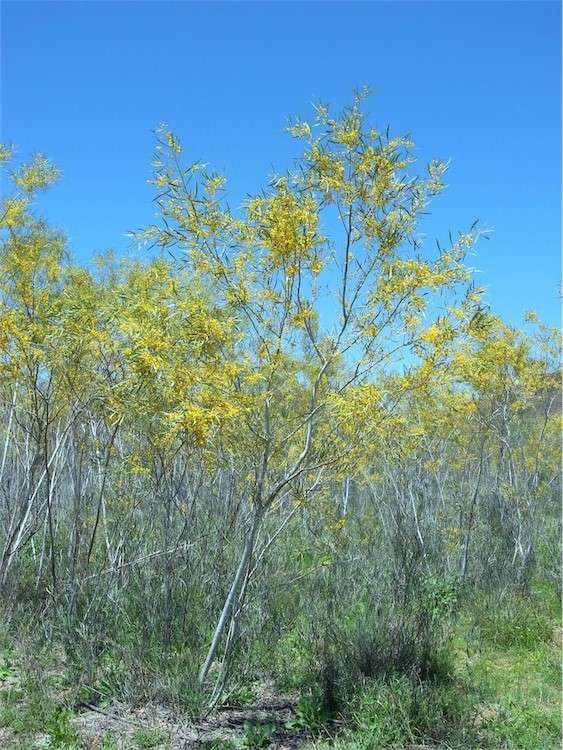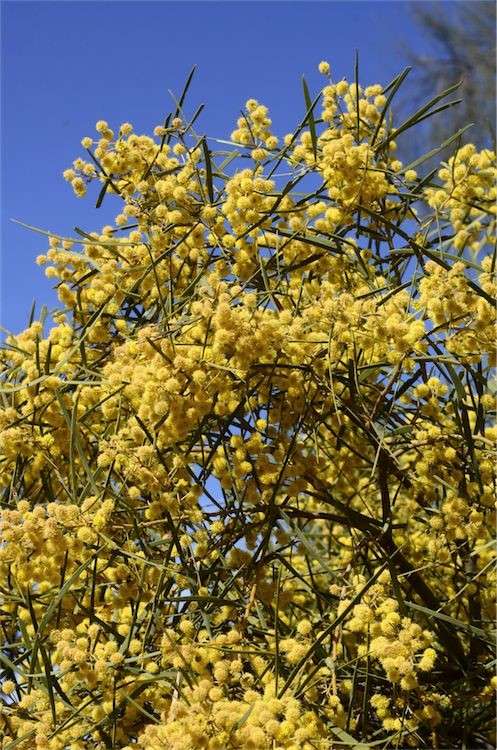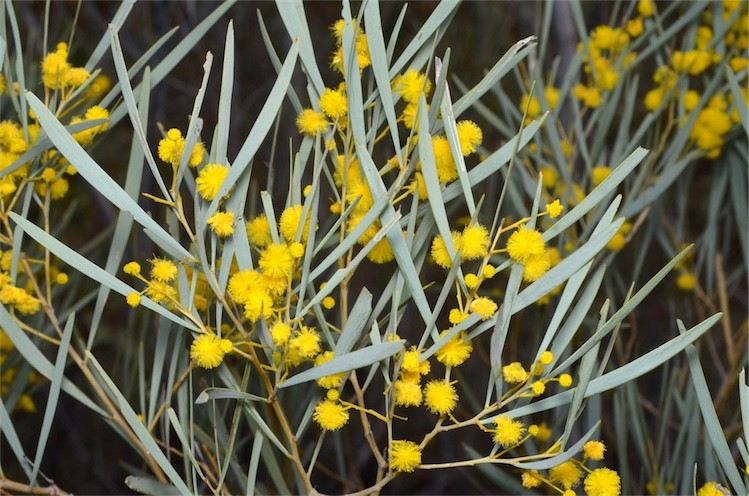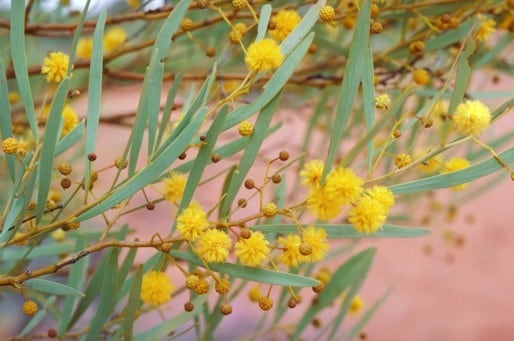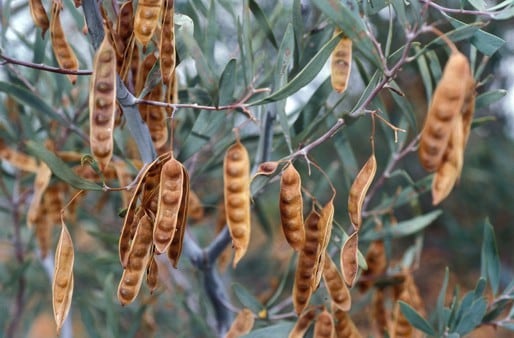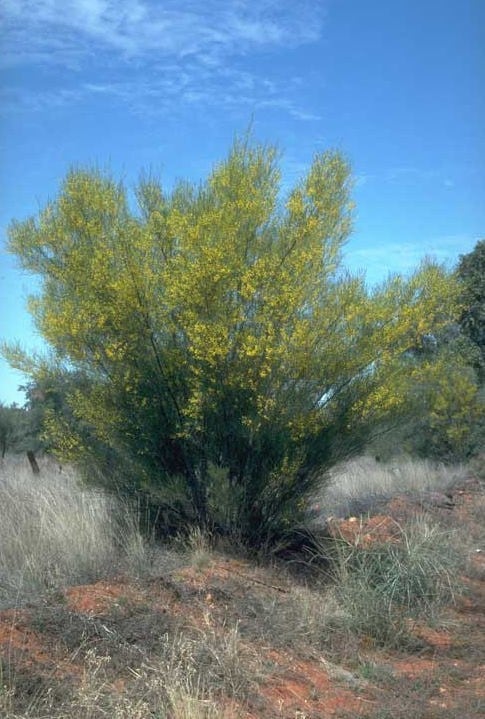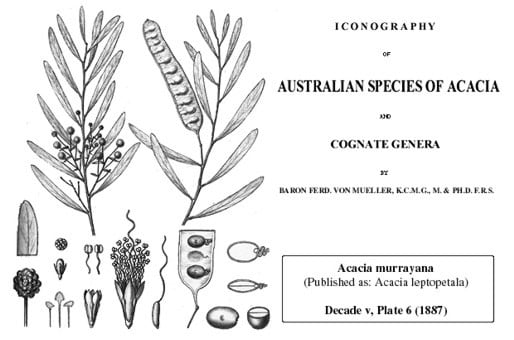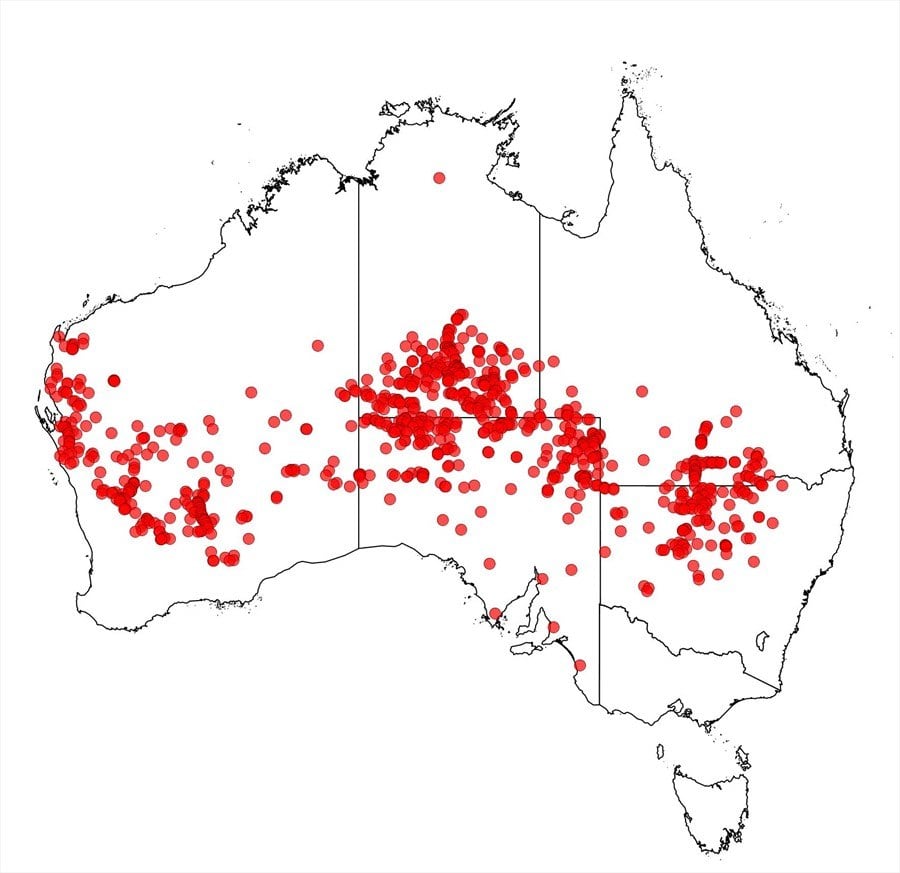Acacia murrayana F.Muell. ex Benth.
WATTLE
Acacias of Australia
Common Name
Murray’s Wattle, Sandplain Wattle, Colony Wattle, Powder Bark Wattle
Family
Fabaceae
Distribution
Widespread in the arid zone from North West Cape and Shark Bay, W.A., through N.T. and S.A. to the western margin of the Great Divide near Mitchell (Qld) and Narrabri (N.S.W.).
Description
Shrub or tree to 5 (–8) m, commonly suckering and forming colonies. Branchlets often pruinose, glabrous. Phyllodes linear to narrowly elliptic, sometimes oblanceolate, 5–15 (–20) cm long, 1.5–8 (-20) mm wide, with a minute callous ±curved mucro overtopping the gland, thinly coriaceous, often drying finely longitudinally wrinkled, pale green to glaucous, glabrous; midrib not prominent; lateral nerves obscure and longitudinally anastomosing; glands basal, and at base of mucro. Inflorescences 2–10-headed racemes; raceme axes 1–6 cm long, slender, glabrous; peduncles 4–10 (-15) mm long, slender, glabrous; heads globular, densely 25–50-flowered, light golden to mid-golden. Flowers 5-merous; sepals ±free. Pods narrowly oblong, prominently rounded over seeds, to 9 cm long, 8–12 mm wide, chartaceous, sometimes pruinose, glabrous. Seeds transverse to oblique, oblong, elliptic, ovate or ±orbicular, 4–5.5 mm long, shallowly depressed at centre, dull, black, exarillate.
Habitat
Grows in sand on dunes, plains or along streams, often with mulga or spinifex.
Specimens
W.A.: 5.6 km S of Menzies towards Kalgoorlie, B.R.Maslin 1935 (MEL, PERTH). N.T.: 29 km SE of Aileron township, M.Lazarides 5772 (K, PERTH). S.A.: Panaramitee, G.Gardiner (AD96650302); c. 12 km NE of Innamincka, D.J.E.Whibley 2457 (PERTH). Qld: near Nebine Ck, L.Pedley 2417 (K, PERTH). N.S.W.: 17 km W of ‘Tundulya’, J.Pickard 2015 (CANB n.v., K, NSW).
Notes
An adaptable, fast-growing species with life-span of about 10–25 years. It is highly fire-tolerant and resprouts readily after wildfires; it is drought-adapted but not especially drought-tolerant. It forms colonies from subsurface adventitious sprouts often a considerable distance from the parent plant. A relatively poor stock fodder plant. Aboriginal use of A. murrayana in central Australia is provided by P.Latz, Bushfires & Bushtucker 110 (1995). Further information concerning the biology, ecology and utilisation potential of this species is provided in BR.Maslin & M.W.McDonald, AcaciaSearch: Evaluation of Acacia as a woody crop option for southern Australia, pp. 142–147, RIRDC Publication No 03/017 (2006).
Future studies may show a need to recognise infraspecific taxa to accommodate the considerable variation in phyllode shape, width and colour.
Acacia murrayana together with A. gelasina, A. pachyacra, A. praelongata and A. subrigida comprise the ‘A. murrayana group’, fide B.R.Maslin, Nuytsia 10: 200 (1995). This group of species is not far removed from the ‘A. victoriae’ and ‘A. juncifolia’ groups. Some forms may resemble A. dietrichiana.
FOA Reference
Data derived from Flora of Australia Volumes 11A (2001), 11B (2001) and 12 (1998), products of ABRS, ©Commonwealth of Australia
Author
B.R.Maslin
Minor edits by B.R.Maslin & J.Rogers
This identification key and fact sheets are available as a mobile application:
URL: https://apps.lucidcentral.org/wattle/
© Copyright 2018. All rights reserved.

